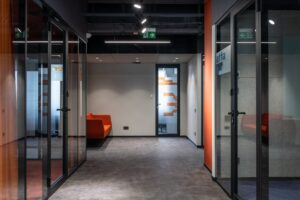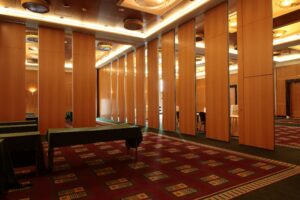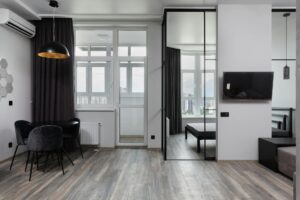Operable Walls: Transforming Offices and Workspaces for Modern Needs
The way we work is constantly evolving. Gone are the days of static, siloed offices. Today’s workplaces demand flexibility, functionality, and the ability to adapt to changing needs. This is where operable walls come in.
What are Operable Walls?
Operable walls are movable partitions that can be easily opened, closed, or reconfigured to create different sized spaces within a larger office environment. Unlike permanent walls, operable walls offer a dynamic solution for maximizing space utilization and fostering a work environment that caters to diverse work styles and tasks.
Types of Operable Walls
There’s a wide range of operable walls available, each with its own advantages and applications:
- Folding Walls: These accordion-style partitions are ideal for creating temporary meeting spaces or dividing large open areas. They offer a cost-effective solution for occasional space division but may not provide significant soundproofing.
- Glass Partitions: These walls offer a sleek, modern aesthetic while allowing natural light to flow through the space. They come in various configurations, including fixed panels, sliding doors, and operable walls. Glass partitions provide some level of sound separation but may not be suitable for highly confidential meetings.
- Operable Glass Walls: These walls combine the benefits of natural light transmission with the flexibility of movable partitions. They are typically constructed with tempered or laminated glass for safety and sound insulation.
- Solid Operable Walls: Made from wood, metal, or other solid materials, these walls offer superior soundproofing and privacy. They are ideal for creating dedicated conference rooms, private offices, or focus areas.
- Retractable Walls: These high-tech walls utilize motorized tracks to open and close. They often reach floor-to-ceiling heights and provide excellent soundproofing, making them perfect for creating large conference spaces or separating noisy areas like break rooms.
Benefits of Operable Walls
1. Increased Space Flexibility:
Operable walls empower businesses to adapt their workspace to meet changing needs. A large open area can be transformed into smaller meeting rooms, private offices, or collaborative zones in a matter of minutes. This allows companies to maximize space utilization and cater to a variety of work styles within a single floor plan.
2. Improved Noise Control:
Open office environments can be a breeding ground for noise distractions. Operable walls, particularly solid or soundproofed glass walls, can effectively dampen noise transmission, allowing for focused work and confidential meetings in close proximity to collaborative areas.
3. Enhanced Privacy:
Whether it’s for confidential meetings, brainstorming sessions, or individual focus work, operable walls can create dedicated spaces for privacy when needed. This fosters productivity and well-being for employees.
4. Fostering Collaboration:
Operable walls can be used to create flexible collaborative zones that can be easily adjusted based on team size and project needs. This promotes open communication and fosters a sense of community within the workspace.
5. Improved Natural Light:
Glass operable walls allow natural light to penetrate deeper into the workspace, creating a brighter and more inviting environment. This can have a positive impact on employee morale, well-being, and productivity.
6. Modern Aesthetics:
Operable walls, particularly glass partitions, add a sleek and contemporary design element to any office space. They create a sense of openness and promote a collaborative work environment.
Choosing the Right Operable Wall
Selecting the ideal operable wall solution depends on several factors, including:
- Space Requirements: Consider the size and layout of your workspace and how you intend to utilize the movable partitions.
- Functionality: Evaluate your primary needs for the operable wall. Is soundproofing a priority? Do you require maximum natural light transmission?
- Budget: Operable walls range in price depending on the material, size, and features. Determine your budget and choose an option that offers the best value proposition.
- Aesthetics: Consider how the operable wall will integrate with the overall design of your office space. Choose a style and material that complements the existing décor.
Beyond Functionality: Design Considerations
Operable walls are not just functional elements; they can significantly impact the overall design and feel of your workspace. Here are some design considerations:
- Integration with Existing Architecture: Ensure the operable walls seamlessly blend with the existing architectural features of your office.
- Visual Transparency: Consider the level of transparency required. Glass walls promote openness, while solid walls provide more privacy.
- Acoustical Treatment: If soundproofing is a major concern, choose walls with proper acoustic insulation materials and consider additional ceiling or floor treatments.
- Technological Integration: Explore options for integrating technology like whiteboards or projection screens onto operable walls for enhanced functionality.
By carefully considering these design aspects, you can transform operable walls from space dividers into impactful design elements that contribute to a positive and




